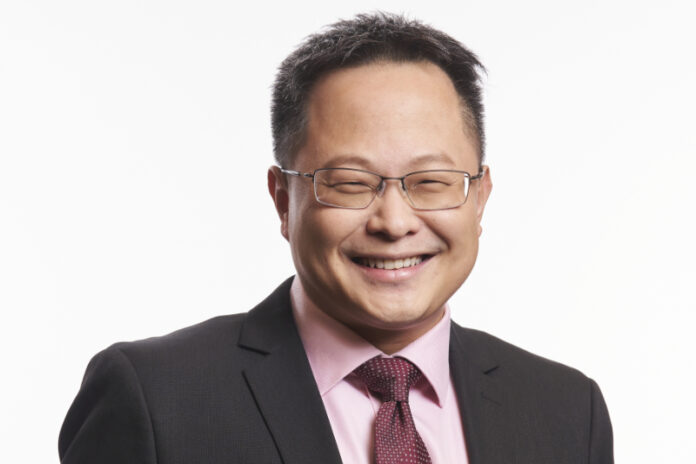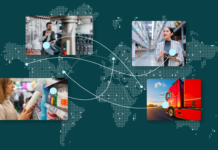
Healthcare, like any other industry, used to rely heavily on manual labour and processes, ranging from record-keeping to the actual delivery of medical care.
The integration of digital imaging, automation, and robotics marked a significant shift, challenging traditional healthcare practices. This evolution, while causing friction for some, resulted in more efficient healthcare solutions.
In this context, Yong Yih Ming, Chief Operating Officer of IHH Healthcare Singapore and Chief Executive Officer of Mount Elizabeth Hospital, shares his insights. He discusses how these technological advancements have shaped the healthcare industry and what changes can be expected in the years to come.
What are your recent observations about the infusion of new technology into healthcare?
When we look at technology or digitalisation initiatives, there are really two perspectives. One is enhancing the patient journey and outcome, while the second is improving operational processes and their outcomes. There is a third component related to clinical procedures and outcomes, but I group that with the patient outcomes. In essence, we’re looking at two mirrored processes in our modernisation initiatives and opportunities.
The first process involves mapping the patient journey, identifying key touchpoints and critical areas of their experience with us. This includes pre-admission, their stay, and post-discharge. These broad categories are overlaid with operational processors and workflows, which support the patient care journey.
In a typical hospital setting, these categories are quite general. However, when we narrow it down, technology and digitalisation initiatives become components of this whole journey. We adopt a macro perspective, identify gaps, and then pinpoint where technological investments are needed. Then we weigh against the outcomes, whether it’s patient-centric or operational.
Is there a drive to have a single, 360-degree view of the patient across the entire journey?
Yes, and if I may, I would just use the IHH perspective, or our digital application called MyHealth360. In a typical app, patients have enhanced accessibility to healthcare services, including appointment making and access to personal health data and information. This data can include basic parameters like height, weight, BMI, as well as lab results from our services. Additionally, patients can access e-commerce services to buy healthcare-related products relevant to their last hospital visits.
For example, consider a patient who comes to the hospital for a total knee replacement. They would likely need mobility aids before they can check out. Through our MyHealth360 app, they can buy these aids online, having them ready by their bedside at discharge. The real value of a single interface like MyHealth360 is in its ability to aggregate a patient’s data into one comprehensive view. There’s a wealth of information, especially clinical data, acquired throughout the patient’s journey with us across our healthcare institutions. A patient might first visit a primary care physician, receive acute care, then, months later, go through the emergency department, resulting in a hospital admission for a few days in the hospital ward, followed by a specialist’s review in the outpatient setting after discharge.
The way I’ve described this demonstrates how fragmented a patient’s healthcare journey can be, as there’s no correlation between the first, second, and third episodes. However, what’s crucial here is that it’s the same patient. This patient, with a specific medical condition, initially sees a primary care physician. Then, a separate episode leads them through the emergency department, followed by admission into our hospital. Upon discharge, both the patient and any subsequent caregivers would be keenly interested in reviewing all health indicators from the beginning of the journey. This comprehensive view is vital, especially when a fourth episode occurs, as the treating doctor needs to be fully informed about the patient’s previous two or three episodes.
An aggregated view of data helps caregivers and doctors by providing deeper insights into a patient’s health history. This is important as it enables doctors to make informed assessments based on the patient’s past actions, which can offer clinical indications of their current health status. Contrast this with the past practice where doctors recorded patient information on hard copy case cards and stored them in cabinets. In such a scenario, if a patient visited three different doctors, there was no facility for cross-sharing insights from previous visits. Therefore, the aggregation of patient data plays a vital role in enhancing patient care and outcomes.
I hope that an app like MyHealth360 continues to evolve and improve, enhancing the overall management of individual patient care. As time goes by, this will enable patients to gain greater understanding of their personal health situations. Ideally, this increased awareness will also bolster the prevention and wellness aspects of their self-care, utilising the comprehensive indicators and data points available within the app.
Rewinding a little bit during COVID, did you find that there had been a market shift in the adoption of technology, both for the internal processes within the hospital employee group, as well as the patient side?
The answer is definitely yes. It’s helpful to first consider the perspective of our customers, in this case, the patients. Yes, COVID-19 has created a lot of opportunities for patients and consumers to access basic needs digitally—such as ordering food and buying items. During the pandemic, considerations of infectious disease became paramount, leading to concerns about visiting clinics due to the risk of getting COVID.
That’s where teleconsultation became a bigger thing. When unwell, patients no longer needed to leave their homes or dress to go out in public, use public transport, and visit a doctor. Instead, they could simply use their phone from the comfort of their bed to consult with a doctor. Their conditions could be assessed, and then the required medications would be delivered to them.
In that sense, two or three key outcomes are achieved. Firstly is the efficiency of care. Consumers no longer need to travel and spend time going to a clinic, queuing, and waiting for their turn. These tasks can be completed online, from the comfort of their own homes. Even if they are in a queue, they can remain at home and engage in other activities while waiting for their turn.
Secondly, from a clinical and infectious disease perspective, patients benefit by staying at home, away from potential infections. In the healthcare business, it’s well-known that patients visiting clinics or hospitals might carry various conditions. There’s always a risk of acquiring an illness from another patient. Digitalisation, particularly through teleconsultation, effectively mitigates this risk, addressing the concern of hospital-based infections that most hospitals had to deal with.
Thirdly, this shift has revolutionised the whole care process. In the past, doctors and nurses generally weren’t trained with technology. Reflecting on how doctors are trained, it’s all about their hands or their brains. The use of technology traditionally played a minor role in the curriculum, so if anything, it enables the conversation about how doctors can adapt their interactions with patients.
Looking at patients’ symptoms remotely via screen was an approach previously not considered. However, COVID has sped up this whole process. This leads to the next point—the adoption rate among healthcare professionals.
Because of this, and the opportunity to handle more cases efficiently compared to a traditional clinic setting, has created the opportunity to see more patients within the same time frame. Consequently, technology has enhanced the efficiency of care provision. Regarding investments, you actually do not need the brick-and-mortar infrastructure like a traditional doctor would require when setting up a clinic. If you really want to, you just need a computer, a speaker, and a microphone.
In addressing the third component, it’s important to balance this innovation with cybersecurity investments and data protection. Such considerations were not as prevalent in the past. This aspect is still evolving, but fundamentally, it contributes to increased efficiency both from a care provider’s point of view and from the patient’s perspective.
Have you encountered any resistance from healthcare providers in terms of learning new technologies?
The quick answer is yes. It’s often very difficult at the onset, as I shared earlier, because traditional training for doctors and nurses typically doesn’t include technology. They enter the workforce, encounter new technologies, and then must adapt, learning new skills and tools while on the job. Resistance usually stems from a comfort zone issue. As an administrator, I am particularly concerned about patient safety in this transition. It’s like driving a car: if you’re used to driving a slower car and then get the opportunity to drive a very powerful one, there’s always a process of understanding the car and getting used to the new horsepower.
In the same light, there is always a race whenever we deploy new technology, and as a result, the individual acceptance level also varies.
To use robotics in surgery as an example, surgeons are generally trained for their skillful hands. They are known for these skills and the positive outcomes of their surgeries. Around 10 or 15 years ago, robotics, like the Da Vinci machine, were introduced. Surgeons had to adapt to manoeuvring surgical procedures through a robotic arm. Imagine a surgeon, trained in hands-on techniques, now having to perform surgery using a robot, feeling distanced from the direct physical interaction. This shift can be intimidating, as it creates a sense of being removed from the action. However, when looking at the clinical outcomes, if performed well, robotic surgery is just as effective, or in most cases, even better.
If you look at good clinical outcomes, it involves picking up new skills, understanding the technology and equipment, and then getting accredited and trained to use it. Subsequently, practitioners become proficient in both traditional surgical methods and the newer robotic techniques. In my experience, deploying technology in healthcare should always be motivated by a clear benefit. For nurses, technology should aim to reduce their workload. For instance, in the past, nurses often had to run in just to make sure that a patient didn’t fall off the bed. However, with the deployment of technology that centrally alerts nurses when a patient moves off the bed, they can respond accordingly. This approach not only saves significant time but also minimises unnecessary interventions compared to traditional methods. It’s a prime example of how job roles can be effectively redesigned through technology.
Technology is introduced to alleviate unnecessary movement, allowing nurses to focus more on actual patient care instead of constantly responding to potential issues. By enhancing workflow, nurses can focus more on patient care, and doctors can improve patient outcomes. There is significant synergy and motivation for healthcare professionals to adopt technology, though it is a journey. Acceptance varies across demographics and age groups, but it’s fair to say that everyone in the healthcare sector has, in one way or another, begun to embrace the journey of technology acceptance.
With the whole Internet of Medical Things coming up, how do you see the future of healthcare develop?
I envision the Internet of Medical Things emerging in specific areas, particularly within certain specialties or population segments. Take, for instance, the use of AR/VR in dementia care for elderly patients. Often, these patients experience isolation and limited interaction. AR/VR can bridge this gap by reconnecting them to society and engaging them in various activities, helping to keep them both physically and mentally active. This is a prime example of how we can integrate advanced technology into specialised care.
The other thing, from a consumer perspective, is the growing consciousness and awareness around prevention and wellness care. There’s an increasing demand among patients and consumers to access healthcare information and track their health data independently, without direct involvement from healthcare providers. As a healthcare provider, I’m seeing the shift from treatment-focused care to preventive care and personal wellness happening more and more.
In Singapore, we have HealthierSG, a government-led initiative encouraging Singaporeans to stay healthy through healthy eating, staying active, and more. Access to information and the ability to track personal performance and data points, to monitor improvements or maintain well-being, is becoming a key part of health care. I see technology increasingly being integrated into the wellness category. As I mentioned earlier, new technologies are also emerging to manage specific clinical needs of certain patient demographics.















